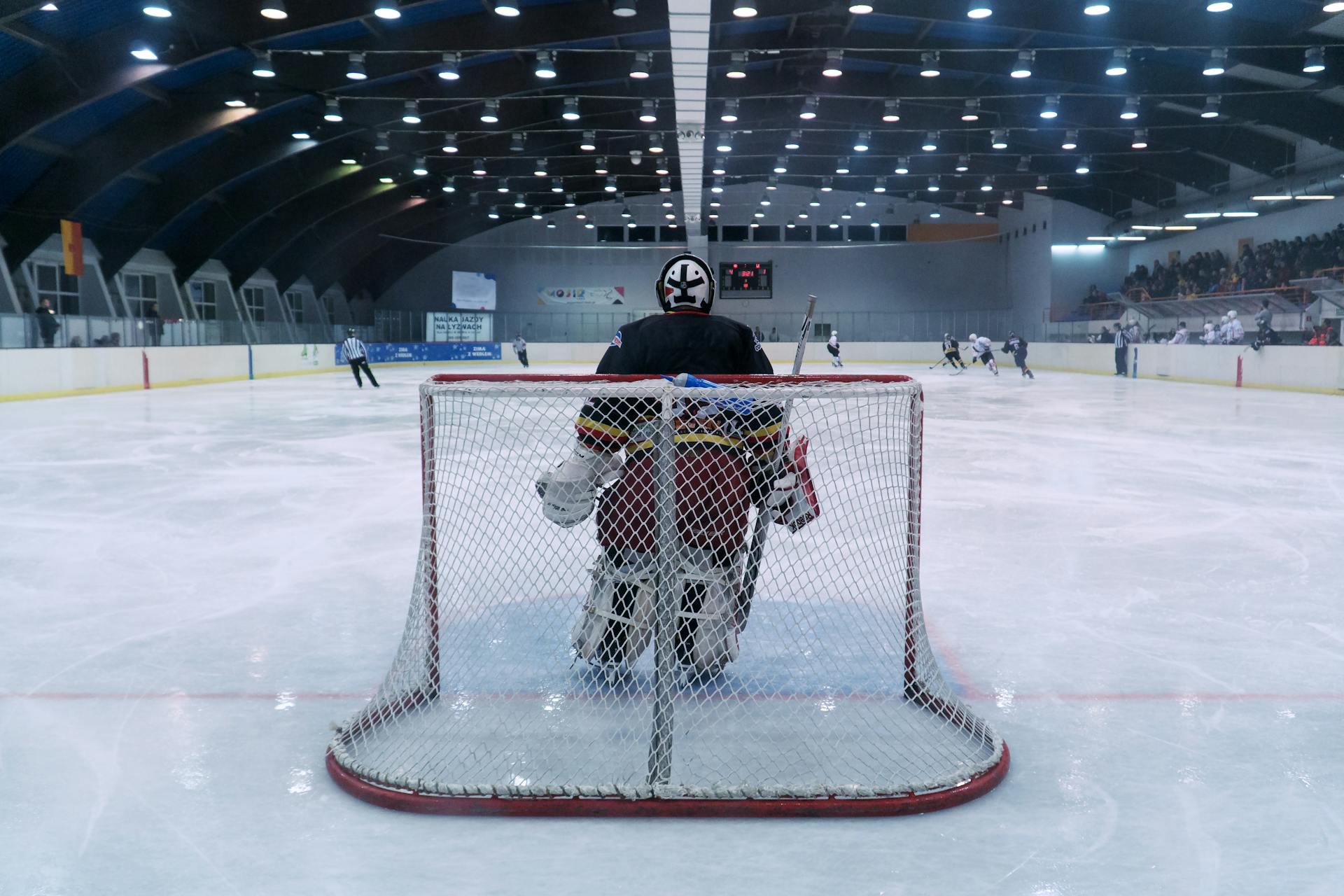The Role of Support: Cultivating Intrinsic Motivation Series with David P. Langford (Part 3)
- David Langford
- Education, Podcast
- 0 Comments

This podcast was originally published on In Their Own Words for The W. Edwards Deming Institute
In this episode, Andrew and David discuss one aspect of cultivating intrinsic motivation: the role of support. Cooperation and collaboration don’t just happen, and leaving a group of people – particularly kids – to just do as they please isn’t cultivating motivation. So how do you support intrinsic motivation?
0:00:03.0 Andrew Stotz: My name is Andrew Stotz and I’ll be your host as we continue our journey into the teachings of Dr. W. Edwards Deming. Today I’m continuing my discussion with David P. Langford who has devoted his life to applying Dr. Deming’s philosophy to education and he offers us his practical advice for implementation. Today’s topic is The Role of Support in Intrinsic Motivation. David, take it away.
0:00:29.5 David Langford: Thank you. So we’re working through five factors that lead to high levels of intrinsic motivation. And we started off with control, autonomy, ownership, however you want to think about that, but that’s number one. And then we had a discussion around that you have to develop levels of cooperation. And today I want to talk about the idea of support. So I’ll never forget a kindergarten class, so students was giving a presentation to the State Board of Education and they were telling the state board about all the ownership they had in class and how they cooperated and how they did all these things on their own and they just knew what to do and had high degrees of ownership. And one of the board members said, “Well, if you’re doing all these things, what’s your teacher doing?” And without hesitating, I’ll never forget this little boy grabs a microphone and he says, “The teacher is not in the closet, you know.”
0:01:39.7 AS: My gosh, insightful.
0:01:42.1 DL: Oh yeah, the room was, there was probably 300 people in the room, at this state board meeting, and you could, the whispers were just, “What did he say? What is he talking about?” See, he knew intuitively that he was being allowed to do these things and supported to do these things and to work together and have a real community in the classroom. And that just didn’t happen by itself.
0:02:12.4 AS: That’s interesting because in that case, you sometimes would think, oh, the teacher’s just, you know, letting the class go free or something like that. But it takes a lot of work. I mean, just as you talked, I was thinking about how confrontational America is in the world. You know, here I am in Asia and most people outside of the world do not think that America is a cooperative partner. In fact, people around the world oftentimes say, you know, they don’t know whether it’s better to be an enemy or a friend of America. And there’s that just competitive. There’s just not that cooperative. How do we work this out? How do we work together to get a better result for all of us? So continue on. Tell us more about support.
0:02:57.6 DL: Yeah. So if you if you want to see more intrinsic motivation emerge, you need to take a look at what you are doing. And you know, when you point a finger there, what is it that saying, there’s three fingers pointing back at you? So yeah, what am I doing and how am I managing in such a way to not have a high degree of cooperation or a high degree of performance in a group? And so there are some very key factors that I’ve learned over the last 40 years that will either hinder or help intrinsic motivation to come out. And the first one I want to talk about, how do you support people is the area of feedback. So feedback versus evaluation.
0:03:53.9 DL: So you know, we always think that our job is to evaluate people, evaluate performance, evaluate a paper that you write and then give it back to you, put a grade on it, etcetera. People don’t respect evaluation very well. There are just so many opinions in it, etcetera. Performance evaluations, Deming talked vociferously about getting rid of performance evaluations, but they do respect feedback. So when I’m in a classroom and I have an assignment, let’s say it’s a paper to write and you hand it in, yeah, I could go through it, put red marks all over it and then hand it back to you with a B minus on it and you’ll probably just throw it in the trash can on the way out the door and that’s the end of it.
0:04:50.6 DL: But if we’ve gone over what a quality standard is for that paper and what it should look like to meet that standard and now you hand that in and I start to give you feedback on it. I sit down with you and I say, “You know, this paragraph doesn’t quite make sense. I think you really should rework these sentences and go over this and your punctuation is not quite right here and if you make these changes, I think you’re going to be very close to being there, to meeting that standard, right?” Well, that’s much different because I have a way to get out of my hole, right? But if I just have a B minus on it or C plus or whatever, there’s no way for me to get out of that hole or to fix it. So it also brings into the whole grading thing. That’s partly why Deming was so adamant about getting rid of grading in both corporations and schools, etcetera. Because it just limits the masses of people trying to achieve a high level of quality in anything they do. So moving to a feedback system is extremely important to get support for intrinsic motivation.
0:06:08.4 AS: And what do you say about the teachers and administrators and people who say, “Yeah, but feedback takes a lot more time.”
0:06:19.2 DL: Exactly. So we have to think about things like that. If I’m having to spend way too much time giving feedback to people, it’s probably because the upstream process wasn’t very good. And I needed to go back and look at that and see, wow, if I want to have fewer and fewer students needing feedback to get it to a high quality standard, I might want to look first at the process I’m using to… The explanation of the assignment or how we went over it or examples that I show people up-front or whatever it might be. But that process is producing the end result. If I don’t like the result, don’t blame the people. They’re just part of the system.
0:07:00.4 AS: It’s interesting because I have a course that I’ve been teaching for a long time. And I have a lot of students going through it on a regular basis. And I can see the weaknesses when the reports are submitted. And then I go back and think, Okay, how do we resolve this? For instance, I want them to write in a very clear format. I want three bullets. I want some supporting arguments. So when I started teaching that, what I did is I made an Excel file that had a limit. You could only type in a certain amount of characters. And I said, “Okay, your first assignment is to operate within this limit.” And then what I did, David, was I created a macro that would take a picture of that in that student’s Excel file. And I said, “Submit your picture to the group. And then let’s discuss those.”
0:07:52.0 AS: And once I then have them present, five or 10 of them, randomly call on students to present your ideas, very quickly, all students can start to see, “Oh, crap, I see the weakness here. I wasn’t that clear on this.” And they started looking not only at common principles, but they also see their weaknesses. And then that then goes back into my lecture as I revise it for the next group to say, “Okay, how do I make sure that they don’t make those mistakes the next time?” And that’s one of the things about the manufacturing process that made Deming such a, it’s so, it’s sometimes simple to apply in a consistent process that’s just cranking away. How do we think about how we apply that in a classroom that we do once a year or once every semester or once every term?
0:08:37.6 DL: Well, one of the previous podcasts, we talked about the Bell curve or the histogram responses of somebody. So your job as a, especially in education, is to not flatten the curve so that you have greater distances from top performers to low performers, but to actually sort of tighten the curve up so it’s very tight. So what used to be top performance is actually being achieved by some of your lowest level students, and the top students are actually doing things that are just unbelievable because the whole curve is much, much tighter between the haves and the have-nots, so to speak.
0:09:29.4 AS: And are we also trying to shift that, once we’ve tightened it, then we have the ability to start to shift it to say, “Okay, what next level of output could we get with students,” or something like that?
0:09:40.7 DL: Yeah, my job is to see that the average performance goes up, overall. And the only way to get a higher average is for everybody to achieve, you know, moving that up. So there’s some other key factors that are critical for supporting intrinsic motivation. So the next one is what I call fail forward. So you’re going to have to put people in a fail forward loop. So either you just didn’t do the assignment at all, in which you’re going to have to fail forward a lot, right? Because you didn’t, you have to produce something or you produced something, but it didn’t, it doesn’t yet meet the standard for high quality work. Well, I’m going to give you time to get it to that standard because that’s my job. My job is to see that you learn this material. My job is not to come up with sophisticated rating and ranking methods and spend all my time tracking that and figuring it through. That’s not the job of teaching and learning.
0:10:48.7 AS: Can you explain fail forward a little bit more? It’s not something I’ve heard before.
0:10:54.2 DL: Well, I have five children and they all learned to walk, whether my wife and I helped them or not. But it was always great fun for us when they got ready to walk and we knew they were standing up. And so I’d stand them up and my wife would maybe get 10 feet away. And then she’d say, “Come on, come on, you can do it.” They don’t really know what they’re supposed to do or what’s going on. But they’re glad that we’re both there supporting them learning to walk. But invariably, our kids would take about three little steps and then they’d fall back on their little bums. And, you know, and so what did we do intuitively as parents?
0:11:37.7 AS: Go pick them up. What did you…
0:11:39.1 DL: That’s right.
0:11:40.5 AS: Yeah.
0:11:41.1 DL: Or we would applause or say, good job or right. But this doesn’t happen in schools. You know, my wife and I were both teachers, so we gave our children D’s and F’s on walking the first time around as motivation so that they’d learn to walk.
0:11:58.1 AS: You go in the corner.
0:12:00.3 DL: Yeah. So, yeah. So when we look at some basic things like that, we realize as part of the human condition, somebody that was actually grading the performance of a toddler walking like that, we would probably report them to social services or something that this is so dangerous. But why would we want to do that to them when they are in first grade trying to learn math or they’re trying to write an English paper at the high school level. Right? You would want to have the same philosophy that, hey, you made an attempt. Your attempt wasn’t quite reaching the standard yet, but you’ll get there. You’ll get there. And I’m here to support you. And my job is here that you, as long as you keep making these attempts, you’re going to keep failing forward until you get there.
0:12:47.2 AS: Right.
0:12:49.2 DL: And then it’s pretty amazing when you understand the neuroscience behind all this, right? Because we talked earlier about the control issue, about time, but everybody’s going to learn at different rates of speed and different time. And the more I understand that variability built into the time factor, I can manage a system so that more and more and more people are all achieving very high levels of performance. And that’s my real job.
0:13:20.8 DL: So another area that I want to talk about under the area of support, how to use support in an environment of intrinsic motivation is sharing. I just over the years just found that sharing is so intrinsic to people. So that’s whether I have students just pair up, “Hey, pair up with the student next to you and share, you know, what did you do and how did you do it and what did you learn from that experience, etcetera.” Or all the way to I have exemplary performance in my classroom by five students, and I’m going to give them a chance to share what it is they accomplished. Now, that’s vastly different than me saying, I’ve got these five students and they’re all going to get an award for being most improved students in the class or something like that. Everybody else in the class has no idea how those people got there. So they intuitively will make up their own stories. Oh, well, you know, the teacher just likes her or he’s a brown noser or he’s this or that. Right? That’s where all of these terms come from.
0:14:34.1 AS: Right.
0:14:34.5 DL: Because they have no idea how they actually accomplished this great thing that they did because that wasn’t shared properly.
0:14:43.3 AS: Right.
0:14:44.8 DL: And sharing is also a way that you can honor people that have made breakthroughs. It doesn’t always have to be your top performers. Right. It could be somebody that really worked hard on something and had a big breakthrough. Is it as good as the top performer in the classroom? No, because I understand variation in the classroom. But…
0:15:05.5 AS: And you just said that somebody that went… What I was thinking about is they had a, somebody had a major breakthrough. But actually, if somebody follows the process of failing forward and they don’t have a massive breakthrough, they’re still going through the right process. And I was recently interviewing a lady named Annie Duke, who talked about, who talks all about, you know, that the process is more important than the outcome in decision making. You may have had a good outcome only because of luck but if you’re improving your process of the way you’re doing it, your probability of a better outcome over time is great. So even if somebody, you know, having someone share their experience of failing forward and keep falling down and, you know, how does it feel and what is it that’s motivating you to keep getting up and, you know, yeah, because I want to do this or that. I want to, you know. So that’s what I was thinking about when you were talking about that.
0:16:04.5 DL: Yeah, even inside of a grading system, when I started learning about Deming I couldn’t just stop grading students. But I could apply these methods and this thinking to have more and more and more of the students all do A work. Right. So instead of like 5% of the students getting A’s, could I get it to 20% of the students doing that level of work? And now can I get it to 50% of the students getting that work? And just like what you’re talking about, it all has to do with the process of, you know, what are we doing and how do we do explanations? Or maybe I shouldn’t even be doing an explanation. It’s just getting in the way of people. And using that data to try to understand is my process producing the result I want. So in a classroom as a teacher, I have a process. I always taught my students you have processes, too. Right? So if your processes are not getting you to the level, you may be want to start talking to some of your colleagues and saying, hey, what are you doing or how are you going about that or how did you make that breakthrough? Because they may have insights that you’ve never thought about before.
0:17:16.5 AS: So if we look at these five key factors for a system of intrinsic motivation, control, cooperation, support, challenge and meaning, right now, we’re talking about support. And would it be about also you’re creating a supportive environment, encouraging people to support each other and giving them feedback? And that’s part of being in a supportive environment.
0:17:40.6 DL: Absolutely. Yeah.
0:17:42.1 AS: So let me…
0:17:42.7 DL: That’s why I keep saying it’s a system of intrinsic motivation. These are interrelated factors. And the more you think about each one of them and how it relates to the others, you become sort of a guru in the classroom that no matter who comes into your classroom over time, you will start to see them more intrinsically motivated when you change that situation. And so lastly, I would want to say that this takes a role change, takes a role change, whether you’re a teacher, administrator, a parent, a student. It’s going to take a role change to think about working well with other people and cooperating. Right. And sharing what I have. See, I can’t, what we talked about earlier is I can’t really share my great process if it’s going to be a detriment to me. Right. If there’s going to be…
0:18:48.3 AS: My grade is going to go down on a curve, if it’s graded on a curve, I have this amazing way of really thinking about this particular topic. So I think I’ll just keep it to myself.
0:18:58.3 DL: Yeah. So, and we see this in really, you know, big systems. I won’t mention the name of the university, but I was working at a university and they caught 200 students cheating on electrical engineering exams. Well, in the investigation, not only were they cheating, this cheating cycle had been going on for 12 years. The students were passing down the answers to this professor’s tests for 12 years from generation to generation. They were actually being intrinsically motivated to share, you know, to the next generation about what was going on. But what did they want to do? Well, they wanted to expel the 200 students that were caught cheating and all this. But without understanding, you created a system forcing people to sacrifice their integrity to get an artificial result, because all the classes were being graded on curves. And so… You’re not going to get the grade you want unless you cheat. And so the system is forcing people to do these defective behaviors.
0:20:12.5 AS: And, David, I have the most horrible response to that by the teachers or the administrators that you’re telling. And they say, yeah, but we’re preparing them for work.
0:20:23.0 DL: I don’t want those people working for me.
0:20:24.2 AS: Yeah.
0:20:25.5 DL: Right?
0:20:28.2 AS: Yeah. But it’s…
0:20:29.7 DL: We’re preparing them to sacrifice their integrity when they come to work. Yeah, that’s really what we want.
0:20:35.2 AS: Disaster. And it is. There’s so much of that in the workforce. And so I think what you’re talking about is so critical related to education, because if we can get these seeds planted right, I mean, we already know that people are, and you’ve talked about it, that people are intrinsically motivated naturally, people are naturally wanting to cooperate. And if we can continue that cooperation and intrinsic motivation, at least they know in school, like this is the best way to get the best out of people instead of whipping them like a horse, you know, as an example. So maybe I’ll wrap up. Yep. Go ahead.
0:21:11.0 DL: Well, it’s funny that you mentioned horses because I actually raise horses. But I, one of the things when people come to visit our horses and stuff, I have to explain to them that, you know, we don’t use whips and we don’t use carrots and we don’t give them treats because you start to give a horse a treat for whatever. Pretty soon they’re biting somebody and they’re trying to dig in your pockets. And again, defective behavior that I’m encouraging or I created. And even the horses have an innate sense of wanting to work and do a good job. And when they see that you’re really supporting them, that’s our topic today, supporting them in doing that job, they can achieve amazing things, that even works with animals, so.
0:22:02.5 AS: Yeah, that’s a great point. I know for anybody that’s watched anything like The Dog Whisperer or The Horse Whisperer and all that, it’s all about, you know, if you ever watch that show, The Dog Whisperer with Cesar, Cesar Millan, you know…
0:22:17.5 DL: Millan.
0:22:17.8 AS: Yeah. What you realize is it’s all about untangling the mess that the adults or the people cause with these dogs. And it becomes so clear.
0:22:31.3 DL: He even says, you know, I don’t have bad dogs, we have bad people, so.
0:22:35.8 AS: Yeah, yeah. And that’s a lot of what we’re talking about in the whole education space is how do we, you know, instead of focusing on the kids, focus on how we improve the system, because ultimately that’s our responsibility. And if I just would share one last thing, it is that I remember going to my first Deming seminar, it was in 1990 and I was about, I don’t know, a 24 year old guy, and I was working for Pepsi, and I saw a lot of the stuff that Deming was talking about. But, man, when he turned and went after some of the leading managers in that room and I wasn’t one, I mean, I was a supervisor on the factory floor, and I heard that, I was like, whoa, that was a wake up call to me to say, take responsibility. You know, it is our responsibility to set this system so that there is an intrinsic motivation. So that just brought me back to that moment.
0:23:28.2 DL: Yeah. Any of us that ever saw Deming have great stories, but your story made me think about I was at a conference with him one time and an Admiral got up and asked a question and Deming said, “We already covered that this morning. Where were you, in the parking lot?”
[laughter]
0:23:49.2 DL: That was the Deming wit.
0:23:51.9 AS: Yes, it could be biting, biting. Well, let me summarize some of this now. Again, we’ve been talking about the five key factors for the system of intrinsic motivation. And today we talked about support. And one of the questions you kicked it off with is like, what am I doing to impede cooperation? You know, how do you start to ask that question? You also talked about the value of feedback instead of evaluation and the idea that people respect feedback. And also you talked a lot about how we can think about like, what’s the quality standard and how do we give feedback? Is our quality standard clear and how do we give feedback, but also adjust ourselves and our system of teaching to improve that? And also, I like the discussion that we had about the Bell curve because it is something that it’s abused.
0:24:43.5 AS: It’s abused all the time around the world. But you talked about the job is not to flatten the curve, but to tighten it. We’re not trying to get these extremely bad and extremely good outcomes. We’re trying to get a more narrow and then to try to shift that curve. And that means that the average is going up. You also talked and you gave the example of a baby learning how to walk and failing forward. And part of support is creating a supportive environment where people are. Finally, the last part is we talked about was the idea of sharing, and sharing… Getting people to share their experience. Instead of awarding or rewarding them, having them share their experiences, not only of the people that have hit a particular milestone or whatever, but also the people that haven’t done that. And then the last thing I think is really the big challenge for all the listeners and viewers out there, which is this – to be supportive takes a role change. It’s about working well with others and helping other people to see how to share and work together. Anything you would add to that?
0:25:51.9 DL: Yeah, I’d say ultimately, we want people to take risks because if they’re not taking risks, we’re not going to have breakthroughs. We’re not going to have new levels of learning in schools. And in order to take those risks, they have to feel like they’re supported, whether it worked out well or it didn’t work out well. If it didn’t work out well, what did you learn from that? And it may be what you learned was, I’m never going to do that again. Okay, well, you learn something from that, right? But if they’re in that highly supportive environment, you’ll see their intrinsic motivation for learning and work come out at a level that you never thought possible before. I can guarantee it.
0:26:32.3 AS: Wonderful. Well, on behalf of everyone at the Deming Institute, I want to thank you again for this discussion, David. For listeners, remember to go to Deming.org to continue your Deming journey. Listeners can learn more about David at Langfordlearning.com. This is your host, Andrew Stotz, and I’ll leave you with one of my favorite quotes from Dr. Deming: “People are entitled to joy in work.”









